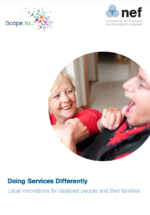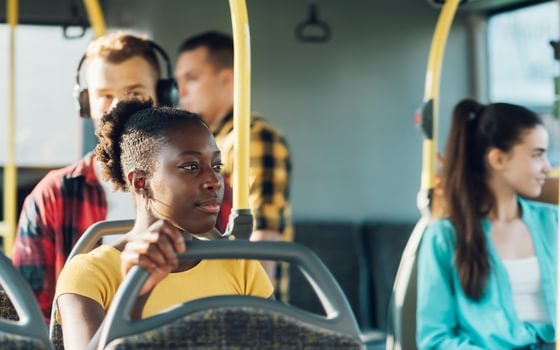Doing services differently
Local innovations for disabled people and their families
10 October 2012
This report shows how some local authorities and providers in England and Wales are delivering better services by working in partnership with disabled people and disabled people’s organisations (DPOs).
Where cuts and welfare reforms risk marginalising disabled people and delaying progress towards a more equal society for a generation or more, the innovative services highlighted here offer an alternative future, one based on strengthening the capabilities and citizenship of disabled people.
Cuts to services and support are marginalising disabled people and pushing them closer to the brink of crisis and poverty. Equally, local authorities find themselves in a very challenging position, faced with unprecedented cuts to their budgets at a time of increasing demand for their services. With more cuts scheduled until at least 2015, this situation is likely to get worse before it gets better.
The impact of these cuts is compounded by welfare reform and the tightening of eligibility for state-funded services. Vital support for disabled people is being made less secure, less protective and increasingly contingent. This is likely to increase demand for existing services, especially in health, housing and social care. The impact on local authorities is that there are more people in their communities who need support, but they have fewer resources to deploy to meet this need.
The challenge for local authorities in this period of austerity is to understand how local services can support disabled people when cuts are the main driver of change. Some local authorities have focused on back office efficiency savings in an attempt to protect front line services; others have had to cut services directly. Yet, relying on cuts alone is likely to be a false economy for local authorities. Cuts don’t make services more efficient, they increase the demand for services elsewhere as well as further marginalising disabled people in the future. This in turn risks increasing the demand for more acute and expensive services. Focusing on what to cut doesn’t produce innovation either.
Changing services in times of austerity should therefore be less about cutting and more about reframing the nature of disabled people’s support. The purpose and rationale for changing services should be about improving the lives of disabled people, reshaping the communities they live in and increasing their independence. Fundamentally, this means prioritising human outcomes – improvements in the well-being and life chances of disabled people, their families and carers – which often lead to cost-savings in the medium and longer term, over and above those generated by an exclusive focus on financial outcomes.
This requires a vision of ‘social change’ for disabled people – change based on the recognition that disabled people are limited by the barriers which society creates, rather than by their impairments. The vision is based on anunderstanding that the right services can make the lives of disabled people better, giving them greater choice and control, enabling them to participate equally in society and modelling social change. We call these services socially innovative.
In this report we present examples of innovations developed by local authorities and providers that demonstrate how services can improve disabled people’s lives, build on their abilities, and model and promote social change. These range from personalised and integrated support provided by local authorities, to services designed and delivered by disabled people for disabled people. They demonstrate ways of doing services differently.
The most important lesson we draw from these case studies is that better outcomes can only be achieved by placing disabled people and their families at the centre of this transformation from the start. The best way for local authorities to innovate is for them to work in partnership with disabled people and DPOs for a fairer, more equal and inclusive society. This will improve the lives of disabled people, as well as their well-being and inclusion in local communities.
Given the current difficult context, it is critical that local authorities learn from each other’s efforts to improve services and support for disabled people and their families. Innovating is harder in the context of austerity, so local authorities need to be committed and confident about wanting to make a lasting change. We hope this report offers a new way of understanding the purpose and direction for the changes that are needed in these times.
Topics Public services







